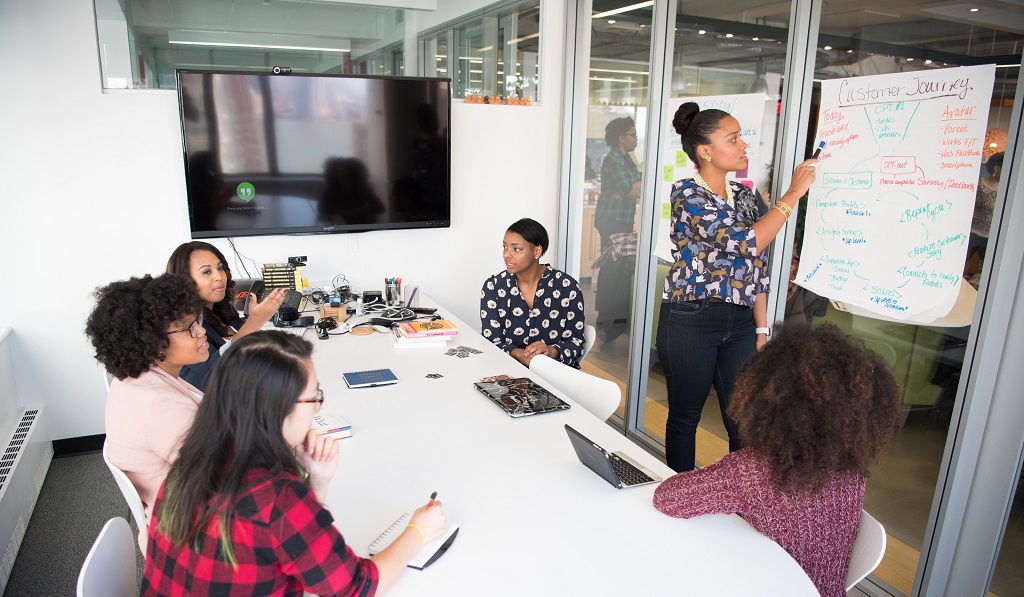The importance of team strengths lies in the idea that each team member brings something unique and can contribute to a successful project if assigned tasks they are suited for.
Recognizing individual strengths makes it possible to assign tasks to team members accordingly – jobs that fit their abilities and interests. This increases the chances of success and keeps morale high as employees feel valued for their contributions.

This article will look at how to identify and assess individual strengths on a team. We’ll also discuss the benefits of assigning tasks based on these strengths – and provide tips for doing so effectively.
Understanding Team Strengths
What are team strengths? Team strengths are each team member’s unique abilities, knowledge, skills, and personal qualities that can be leveraged to benefit the team.
This includes creativity, problem-solving skills, communication abilities, leadership qualities, decision-making capabilities, organizational understanding, and more. Understanding and assessing each team member’s strengths makes it possible to form an effective and high-performing team.
Assessing individual strengths involves looking at each employee’s experience, expertise, and natural talents or proclivities.
Team leaders should consider what an employee is good at and where their interests lie when assigning tasks. Doing this allows them to create teams with all the skillsets required for success.
When teams are structured based on individual team member’s strengths, it can improve performance by creating a synergy between different skill sets and personalities to reach common goals.
Assigning tasks based on employees’ strengths can also boost morale as employees feel valued for their contributions and are invested in the project because they’re working on something they’re interested in or good at doing.
Furthermore, it helps prevent burnout or boredom by discouraging people from being overburdened with tasks that don’t match their abilities or interests while ensuring everyone has something engaging to work on.
Advantages of Focusing on Team Strengths
Let’s now explore the advantages of concentrating on team strengths.

Effective communication among team members
Effective communication among team members is a key advantage of concentrating on team strengths. When teams are structured based on individual members’ strengths, they can be more vocal and open in sharing ideas and giving feedback, leading to better collaboration.
This creates an atmosphere of trust and understanding between all parties involved, promoting a better working environment.
Emphasis on objectives and outcomes
When teams are structured around individual strengths, it emphasizes achieving project objectives or desired outcomes.
This helps keep everyone focused on their shared goals while at the same time allowing for flexibility when it comes to how those goals are achieved.
Equal contribution from all team members
Structuring teams according to individual strengths ensures that each member contributes equally and can share their unique talents. This allows for a more balanced approach to tackling tasks, rather than one or two members carrying most of the workload.
Provision of mutual support
Having team members with different strengths allows them to support each other by providing advice or assistance in areas where they are not as skilled. This kind of teamwork can help boost morale and create an atmosphere of collaboration that leads to better results overall. This team-based approach can be particularly valuable in IT, for example, when you hire developers for a startup based on their strengths. By carefully assembling a diverse group of developers with complementary strengths and skills, startups can build a well-rounded team that is able to effectively tackle the varied challenges they face.
Maintained organization
Structuring teams around individual strengths promotes a sense of order and structure that keeps everyone on task and ensures all deadlines are met. Furthermore, knowing who is responsible for what jobs allows teams to delegate work more efficiently and effectively.
Promotes creativity
When teams are structured according to individual strengths, it encourages team members to think outside the box and develop creative solutions. This helps break down barriers of traditional mindsets and allows for more innovative thinking that could lead to better results.
By organizing teams around individual strengths, organizations can create an atmosphere of collaboration and trust that makes projects run smoothly and efficiently. This leads to better outcomes and improves morale among team members, creating a healthier work environment overall.
Top 10 Strategies to Improve and Enhance Team Strengths
Apart from (the obvious) organizing teams around individual strengths, a few more advanced strategies can help enhance team strength.

Identifying each team member’s strengths
You can’t work with individual strengths if you don’t know what they are. Start by identifying each team member’s skills, unique abilities, and interests outside of work. This will provide a better understanding of how best to utilize each person’s talents in the workplace.
Utilizing individual strengths for overall team success
Once the team’s forces have been identified, it is important to ensure they are utilized properly to achieve overall team goals. Delegating tasks according to each employee’s talents can help create an atmosphere of collaboration and trust within the team.
Allotting team tasks according to the strengths of employees
When assigning tasks, ensure everyone has a role matching their strengths. This allows each team member to do their best work and makes the team more productive.
Including strengths in performance discussions and assessments
When discussing job performance, use each employee’s strengths to evaluate how well they contribute to the team. When assessing results, consider the effect of an employee’s power on overall productivity and success.
Assisting employees in matching their strengths with their role’s requirements and expectations
Help employees understand which skills they need to develop further to better fulfill their roles within the team. Individuals can tailor their skillset accordingly by understanding what is expected from them.
Promoting the idea of team members as “strength advocates.”
Encourage team members to become “strength advocates,” regularly recognizing and praising each other for their strengths. This will create an atmosphere of collaboration and trust, allowing the entire team to benefit from each member’s strengths.
Taking advantage of each person’s strengths
When it comes to the team, everyone’s unique strengths are important. By leveraging each person’s talents and abilities, the team can work together more effectively and achieve its collective goals better.
Not allowing one strength to overshadow another
When highlighting team members’ strengths, be careful not to let any individual’s talents overshadow the contributions of others. Recognizing each person for their abilities and celebrating the team’s accomplishments is important.
Encouraging employees to continue developing their strengths
Provide support and guidance for employees who wish to enhance their abilities further. Encourage individuals to take advantage of professional development opportunities, such as training courses, conferences, and networking events.
By investing in employees’ professional growth, you can ensure that they are well-equipped to contribute positively to the team.
Owning up to mistakes
No team is perfect, and every team will make mistakes from time to time. That’s why each team member needs to take responsibility for their errors or shortcomings while also having understanding and being supportive of those of others. This will help foster an environment where everyone can learn from their mistakes and grow together.
Examples of Team Strengths and Weaknesses
As with anything, teams have strengths and weaknesses that must be addressed to reach peak performance.
Team Strength Examples
Teams often have strengths such as:
- A wide range of skills and perspectives: With team members having different areas of expertise, they can find creative solutions to problems and develop ideas that no individual could achieve alone.
- Excellent communication abilities: Strong communication skills within the team provide individuals with greater insight into each other’s goals and allow them to work together more effectively.
- High levels of motivation: When everyone is motivated to achieve their goals, individual tasks become easier, and progress is accelerated.
- Flexibility to adapt to changing conditions: With a team’s ability to adjust and respond quickly, it can stay ahead of the curve in competitive markets.
- Diverse knowledge bases: Drawing on the varied experiences of each team member provides the group with a wider range of ideas and perspectives that can lead to innovative solutions.
Team Weakness Examples
On the other hand, teams can have weaknesses such as:
- Poor organization and planning: Without a clear action plan, teams are more likely to make mistakes or miss deadlines.
- Unclear objectives and goals: If team members don’t understand the mission they’re working towards, it can be difficult for them to stay motivated and productive.
- Lack of trust among members: When individuals cannot rely on one another, it can lead to conflict and decreased levels of collaboration.
- Overly competitive attitudes or behaviors: This can cause team members to focus more on competing with each other instead of working together productively.
- Inadequate resources or support from management: Without proper equipment or guidance from leadership, teams may struggle to reach their potential.
6 Methods to Recognize Team Strengths and Weaknesses
There are ways to understand a team’s strengths and weaknesses. To find strengths, look at how motivated people are, how the team can change with new conditions, and the different knowledge each person has.
To find weaknesses, look at things like if there is a plan, if everyone knows why they’re doing something, if people trust each other or not, if there is competition instead of working together nicely, and if there is enough help from grown-ups.
When teams know their strengths and weaknesses, it helps them do better in the future because they can turn their weaknesses into strengths. Moreover, if a team can identify its strengths and weaknesses, it can make changes to better support the group’s goals.
Some methods for recognizing team strengths and weaknesses include:
- Regularly discussing team progress: This allows one to reflect on successes and areas that require improvement.
- Developing a survey or questionnaire for members to complete: This will help surface any issues within the team that need addressing.
- Encouraging honest communication among members: Open dialogue allows teammates to express their opinions and get feedback, which can be beneficial when identifying areas of strength and weakness using the NPS methodology.
- Seeking input from outside sources such as mentors or advisors: Having external perspectives on your team can help assess strengths and weaknesses.
- Implementing performance reviews: This is a great way to track individual and team progress over time and to identify areas of strength or weakness.
- Analyzing competitor teams: Looking at what other teams are doing can provide insight into your own team’s strengths and weaknesses in comparison.
Recognizing a team’s strengths and weaknesses can help improve communication, trust, collaboration, efficiency, decision-making, and overall success. Understanding these attributes will lead to better results for any group endeavor.
Inspirational Quotes about Team Strength
As stated by numerous great individuals throughout history, team strength is an essential element in achieving success.
Helen Keller once said, “Alone we can do so little; together we can do so much,” emphasizing how powerful a team can be when they work together towards a common goal.
Michael Jordan famously said, “Talent wins games, but teamwork and intelligence win championships,” emphasizing how winning requires individual skill and Teamwork.
Patrick Lencioni agreed with this sentiment: “Teamwork begins by building trust. And the only way to do that is to overcome our need for invulnerability.” Trust is paramount for successful teamwork, and overcoming individual barriers is a critical first step.
Napoleon Hill believed that mutual success is essential to team strength: “It is true that you can succeed best and quickest by helping others to succeed.”
Finally, Mother Teresa emphasized how even small actions can add to something wonderful when we work together: “None of us, including me, ever do great things. But we can all do small things with great love, and together we can do something wonderful.” The importance of team strength is evident in the words of these renowned individuals who have achieved greatness through collaboration.
Team Strengths FAQ
What Defines a Winning Team?
A winning team establishes a shared goal, communicates effectively, and works together to achieve success. A winning team may consist of members with different backgrounds who bring various skill sets and perspectives.
It requires collaboration and a willingness to encourage each other throughout the process. Ultimately, a “winning” team should be able to overcome obstacles and work towards achieving their common goal.
What Are the Traits of Efficient Team Members?
Effective team members contribute meaningfully by being good communicators, offering constructive criticism when needed, working cooperatively with others, and staying positive throughout the process.
High-functioning teams prioritize collective efforts rather than individual contributions.
They possess strong organizational skills to ensure all tasks are completed. They are also willing to adjust their strategies and stay flexible in ambiguity.
What Constitutes Successful Teamwork?
Successful teamwork requires a clear vision, organized responsibilities, effective communication, and an atmosphere of collaboration. Team members should be able to trust and rely on each other, work with mutual respect, constructively provide feedback, and recognize individual contributions.
When all these components come together, teams can create a synergy that promotes learning and increases the efficiency of their work efforts. Ultimately, successful teamwork is productive and results in achieving desired outcomes.
Summary
Team strengths are essential qualities and attributes that allow a team to achieve its objectives and be successful. They are the underlying building blocks of an effective, high-performing team.
A strong core group of members with diverse abilities, skill sets, and perspectives ensures that all tasks can be effectively managed and completed.
The importance of team strengths cannot be overstated; they are the key to achieving maximum efficiency, performance, and accountability among team members.


